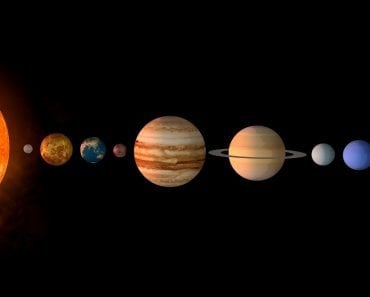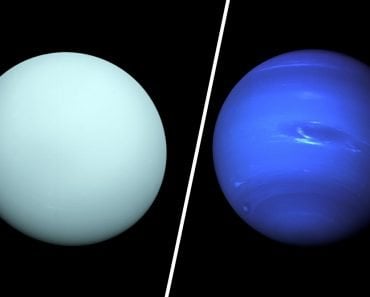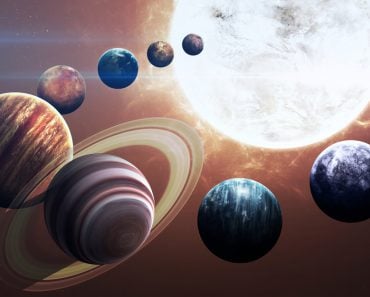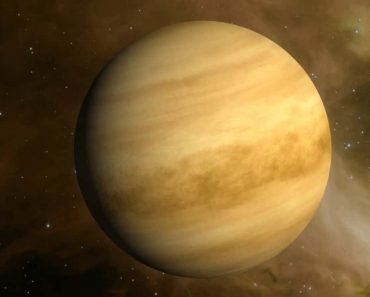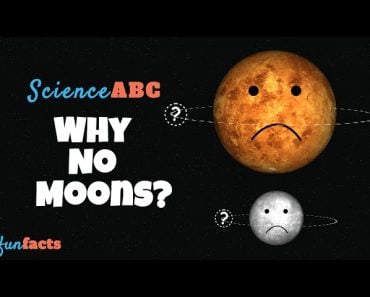Table of Contents (click to expand)
Gas giants are massive planets composed mainly of gases, such as hydrogen and helium. Ice giants are massive planets composed mainly of substances that are heavier than helium and hydrogen, such as oxygen, nitrogen, carbon, and sulfur.
Our universe is an inconceivably vast space that contains billions of heavenly bodies, and even then, most of outer space is completely empty! In our solar system, for example, there are 8 planets: Mercury is the closest to sun and hot as hell. There is also Venus, the brightest planet in the solar system, as well as Earth, “the blue planet” – the only planet which sustains life, and our precious home. There is also the “red planet”, called Mars, where astronauts hope to someday find life. We’ve found water there, so we seem to be getting somewhere!
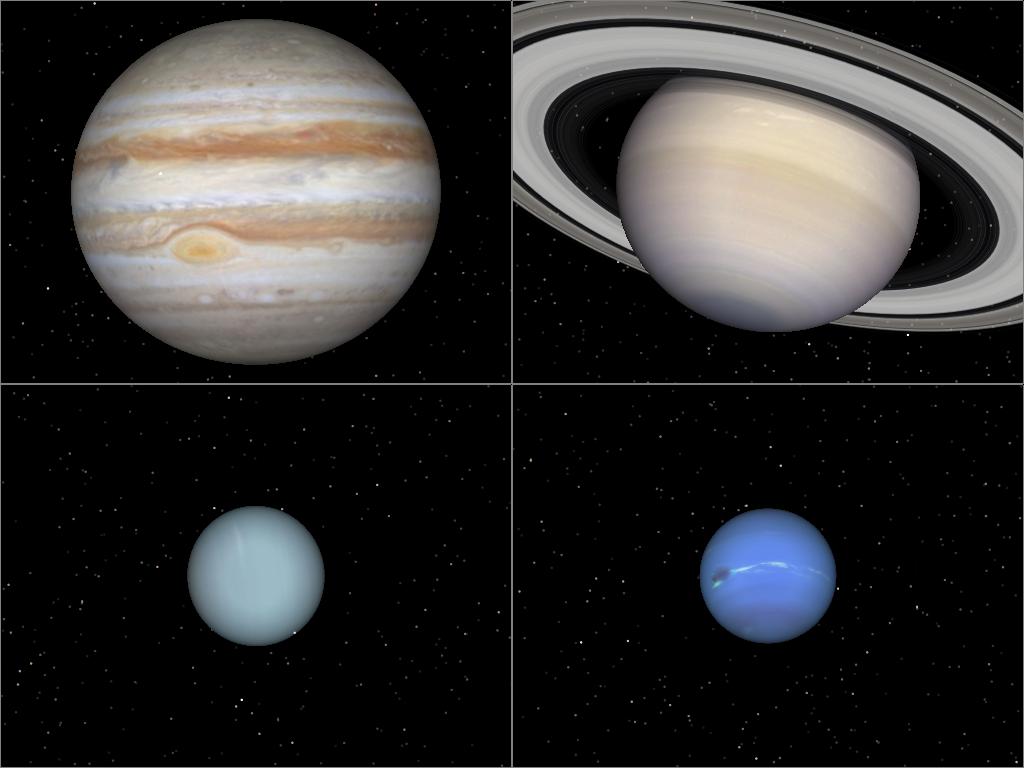
Beyond these inner planets, however, there are four larger planets known as the “Giant Planets“, obviously named because they are massive in comparison to the other four planets. These four giants are Jupiter, Saturn, Uranus, and Neptune.
Giant planets are also called “Jovian Planets”. The term Jovian comes from Jove, the king of the gods in Roman mythology, and also the early name of Jupiter. Therefore, Jovian describes the other giant planets as being Jupiter-like. All Jovian planets were also once known as “Gas Giants”, but Uranus and Neptune were later classified as “Ice Giants“.
Why are these planets called gas giants and ice giants?
Recommended Video for you:
What Are Gas Giants?
A gas giant may be classified as a planet whose original composition is of gases, such as hydrogen and helium, with a small rocky core. The gas giants of our solar system are Jupiter, Saturn, Uranus and Neptune. These planets are known as Jovian Planets. They were named as such primarily because these are the planets that come after Jupiter and lie on the outer regions of the Solar System, past Mars and the asteroid belt.
Jupiter and Saturn are considerably higher in mass, as compared to Neptune and Uranus. They also differ in their constituent composition of gases.

The first and largest gas giant in our solar system is Jupiter, with a radius almost 11 times the size of Earth. Currently, it has 50 moons and 17 more satellites waiting for confirmation from NASA.
The planet is mostly made of hydrogen, methane, ammonia and helium surrounding a core made of rock and ice. It is speculated that most of the core is made of liquid metallic hydrogen, which creates a large magnetic field around it.
The second biggest gas planet is Saturn, which is about nine times the Earth’s radius. The first distinctive feature of Saturn is its large rings, which remain a mystery to the scientific community as to their formation. Saturn has 53 moons, with nine more awaiting confirmation from NASA. Saturn also contains a similar composition to Jupiter, which is hydrogen and helium, as well as a core identical to Jupiter.
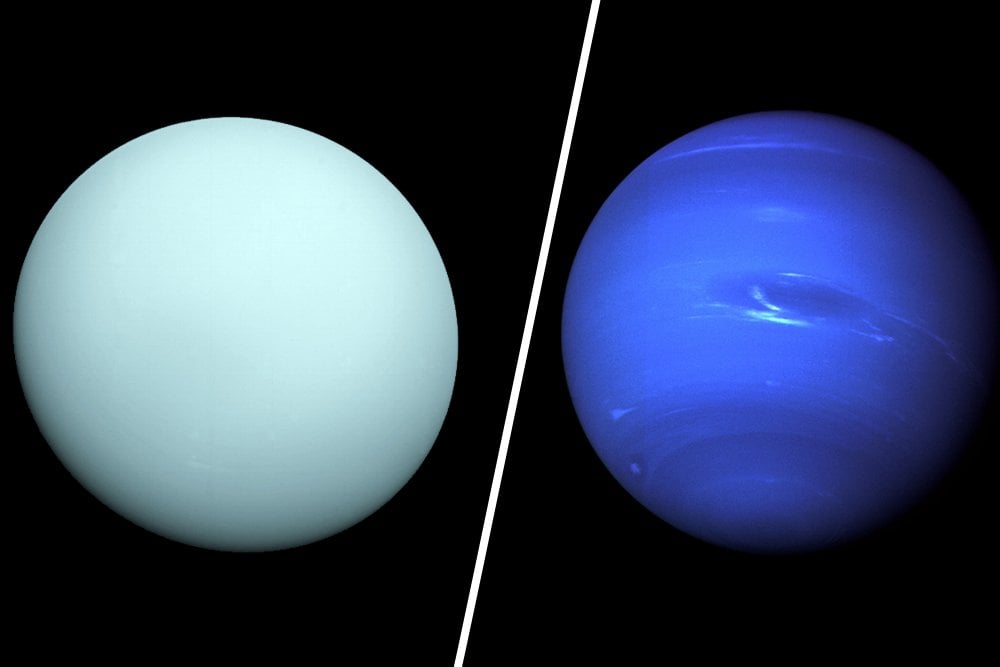
Coming to the third gaseous planet, we have Uranus, with a radius about four times that of Earth. The unusual thing about Uranus is that it rotates on its side, and its rotation is backwards; the only other planet that turns this way is Venus. According to NASA, the planet has 27 moons, and the atmospheric composition of Uranus is hydrogen, helium and ammonium.
The final gas planet in our solar system is Neptune, which also has a radius four times that of Earth. It has 13 confirmed natural satellites and one awaiting confirmation from NASA. According to NASA, the atmosphere of Neptune is the same as that of Uranus.
How Did The Gas Giants Form?
A common notion among astronomers when it comes to the creation of these planets is that, at first, they were rocky and icy, just like the terrestrial planets. Terrestrial planets are like Earth, with a hard outer surface made of rock and metal.
However, the size of these cores was relatively large in comparison to that of our home planet. These massive cores were able to gravitationally attract gases, such as hydrogen and helium. This phenomenon occurred when the Sun was condensing and had a lot of hydrogen and helium surrounding it. Planets like Jupiter and Saturn were able to latch on to enough of the hydrogen and helium before the Sun formed and blew away this initial cloud.
Since planets like Uranus and Neptune had smaller cores (in comparison to Jupiter and Saturn) and had orbits farther away from the Sun, they were unable to latch onto much of the hydrogen and helium present in the solar system. This is one of the more plausible explanations as to why Uranus and Neptune are smaller than Jupiter and Saturn. Even when the atmospheric percentage of Uranus and Neptune is compared to Jupiter and Saturn, it’s observed that the atmosphere (of Uranus and Neptune) is more polluted and has a higher concentration of methane and ammonium.
The name ‘gas giant’ was coined in 1952 by science fiction writer James Blish to refer to all the giant planets. The four giant planets are huge gas balls, which is quite different than Earth and and other three rocky inner planets. Gas giants are primarily composed of gases, such as hydrogen and helium, and a much thicker layer of metallic hydrogen, along with a molten rocky core.
Unlike rocky planets, gas giants do not have a well-defined surface, and there is no clear boundary between where the atmosphere ends and the surface begins. In other words, you wouldn’t be able to land on these planets, as their atmospheres simply become gradually denser towards the core, perhaps with liquid or liquid-like states somewhere in between.
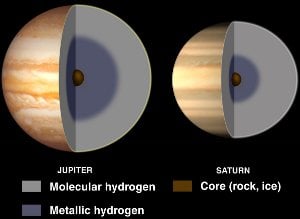
Until 1990, there were four gas giant planets, but in the 1990s, it was discovered that Uranus and Neptune were composed of different substances than Saturn and Jupiter. As of now, there are only two gas giants in our solar system – Saturn and Jupiter. Uranus and Neptune are now known as “ice giants”.
What Are Ice Giants?
Ice giants are massive planets composed mainly of substances that are heavier than helium and hydrogen. The ice giants, Uranus and Neptune, are primarily made up of oxygen, nitrogen, carbon, and sulfur – the next most abundant elements in the Sun after hydrogen and helium.

Both Uranus and Neptune lack the deep metallic hydrogen mantles that are found on Jupiter and Saturn, and they are mostly ice that lacks a deep hydrogen mantle. As a result, these majestic planets are known as ice giants, in order to distinguish them from the gas giants: Jupiter and Saturn.
The more we learn about space and our solar system, the closer we are to understanding how we came to exist on this planet. It’s a slow process, and names occasionally have to be changed, but it’s all worth it in the end!
Current Research On Gas Giants
Jupiter
When it comes to the current research scenario for these planets, the most notable one we can begin with is the Juno spacecraft, which reached Jupiter in the year 2016. Juno has currently studied the planet’s rings, which has been difficult up to this point because the rings have been visually far more subtle from a distance in comparison to Saturn. Juno has also observed that there is an Aurora present on Jupiter, but the cause of it is different particles than what we found on Earth. It has also made breakthrough discoveries of snow particles present in the high-altitude clouds.
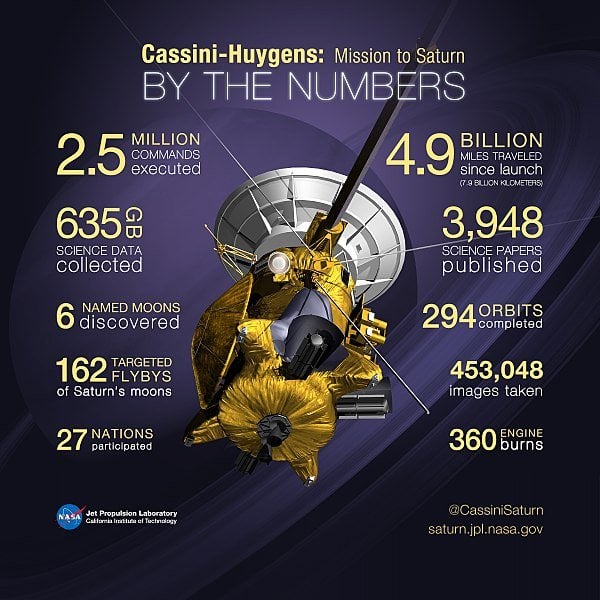
Saturn
When it comes to Saturn, the Cassini Project extensively studied the features of Saturn from the year 2004 until the project was finally shut down in 2017. However, the data that Cassini collected is still being analyzed and studied to this day. At the end of its mission, Cassini was able to observe Saturn’s gravitational and magnetic fields, which gave scientists a whole new perspective as to how these rings were formed. It finally ended up plunging into Jupiter, giving us even more detail about its atmospheric composition.
Uranus
When it comes to Uranus, the storms that brew on it are a fervently studied and observed topic by both professional and amateur astronomers. Scientists also have a deep-seated interest in learning about the structure of its rings and further investigate the exact atmospheric composition of Uranus. Uranus also has many Trojan Asteroids, which were discovered in 2013. Trojan asteroids are those asteroids that are in the same orbit as a planet.
Neptune
When we take a look at the final gas planet, Neptune, its storms are the primary focus of study. Work from the Hubble Telescope has given us great insight into these storms, and these storms recently seem to be calming down. Scientists are currently trying to come up with a model that can explain the rise and dissipation of these storms.
In conclusion, we can state that, although we have garnered a substantial understanding of these gaseous planets, they still have certain aspects that demand further scientific inquiry, which would further our holistic understanding of them.


